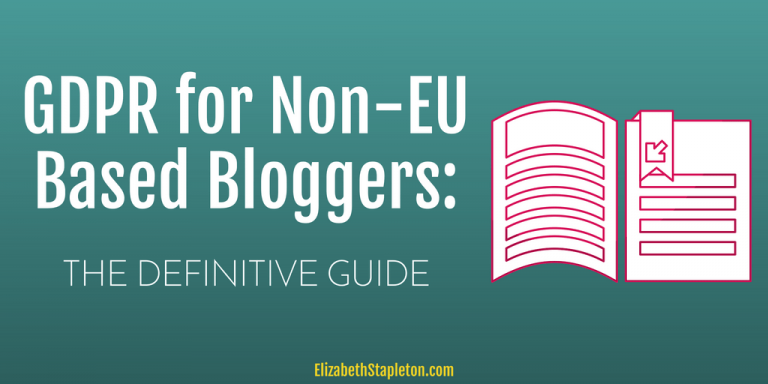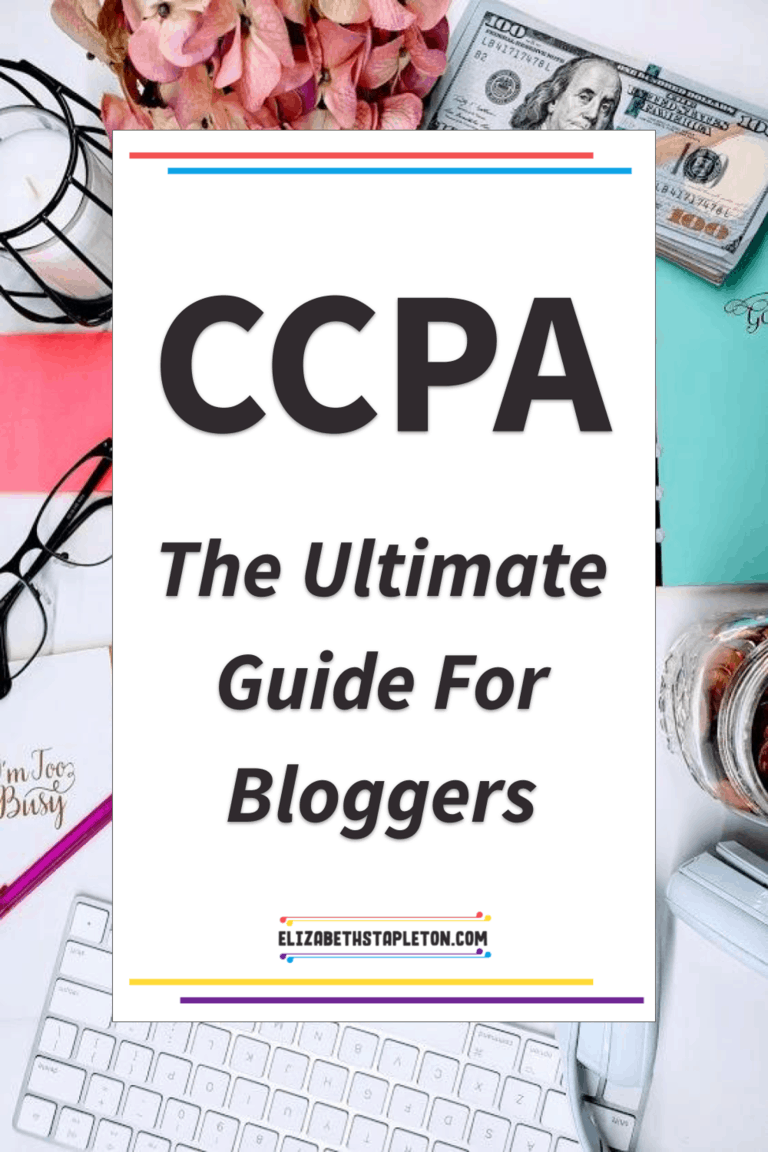Why Double Opt-In Might Not Be Legally Compliant (And What To Do Instead)
Email marketing is crucial to a successful business, unlike social media it’s a platform you own. And if you’re like post online business owners you are regularly trying to grow your list, either by offering freebies, participating in bundles, or just offering a newsletter. But what you might be missing when growing your list is proper consent to send marketing emails.
Using double opt in and think you’re all set? Unfortunately that likely isn’t the case.
The reality is that double opt-in alone doesn’t guarantee you’re being legally compliant.
Whether you’re trying to stay aligned with GDPR, CAN-SPAM, or other privacy laws, what really matters is the type of consent you’re collecting — and how clearly your subscriber understands what they’re agreeing to.
That’s where even experienced bloggers and digital business owners often get tripped up.
In this post, I’ll break down:
- Why double opt-in doesn’t necessarily equal legal consent
- What the law actually requires for email marketing compliance
- And how to make sure you’re collecting proper consent and building a stronger and more engaged email list
What Double Opt-In Actually Does
Double opt-in is an often optional feature offered by email marketing services, where a subscriber must confirm their email address after signing up. Usually, this looks like:
- A user enters their name and email on a form to sign up for your list or a freebie
- They receive a confirmation email often referred to as the double opt in email and must click a link to complete their subscription
The idea is to ensure the email address is valid and that the person truly wants to be on your list. It’s a great tool for improving list quality and email deliverability because it helps keep spam bots and fake email addresses out.
Here’s where things can get sticky: some platforms allow the confirmation click to also act as the freebie delivery and it’s often confused for consent to receive marketing emails.
It might seem streamlined, but it doesn’t actually meet the requirements for legal consent under data privacy laws like GDPR (General Data Protection Regulation).
Ultimately double opt-in can improve email list deliverability, but it’s not a legal compliance tool by itself.
What Legal Email Consent Actually Requires
Under laws like the General Data Protection Regulation (GDPR) in the EU, and to a lesser degree the U.S. CAN-SPAM Act, consent isn’t just about confirmation — it’s about clarity, specificity, and intent.
To be legally valid, consent must be:
- Freely given – You can’t make marketing consent a condition of getting a freebie
- Specific and informed – Subscribers must know exactly what they’re signing up for
- Unambiguous and affirmative – No pre-checked boxes, vague language, or silence-as-consent
For example, under GDPR, a subscriber must clearly agree to receive marketing messages — not just request a free download.
If you’re relying on a “click to confirm your email and get the freebie” model, but haven’t separately asked for permission to send newsletters or promotions, you could be in violation.
This is where many well-meaning bloggers and digital businesses get it wrong. You may think you’re being compliant by using double opt-in for your mailing list, but without that explicit, separate consent, you’re still missing the legal mark — especially with international audiences.
When Double Opt-In Isn’t Enough Example
Let’s say you’re using ConvertKit (now Kit), which was designed with creators in mind and offers double opt-in where the click to confirm also automatically delivers the freebie.
Sounds clean, right? The problem is that clicking to access a freebie isn’t the same as giving informed consent to receive marketing emails.
In fact, under GDPR, that approach doesn’t count as legal consent for promotional messages. If your platform doesn’t include a clear, separate consent then you’re not actually compliant.
This means you could be:
- Sending marketing emails to someone who never gave proper consent
- Failing to inform them exactly what they’re opting into
- Exposing your business to privacy complaints or legal risk
This is especially critical if your audience includes anyone in the European Union. For a full breakdown of GDPR for those located outside the EU, check out my GDPR Guide.
Why Getting Specific Consent Isn’t Just Legal — It’s Smart Business
Even if your business isn’t technically required to comply with GDPR or similar laws, following these consent standards can actually improve your email marketing results.
When subscribers know exactly what they’re signing up for — and choose to receive your marketing emails — they’re more engaged subscribers. They open more emails, click more links, and are less likely to unsubscribe or mark your messages as spam.
Proper consent also helps:
- Build trust with your audience – Transparency shows integrity, and people are more likely to buy from businesses they trust
- Improve deliverability – Fewer spam complaints = better inbox placement
- Clarify your brand promise – Setting expectations up front leads to a better experience and fewer surprises
So instead of worrying that requiring an extra checkbox in the opt-in process or changing how you position your freebies will reduce conversions, think of it as filtering in your most interested leads.
The people who actually want to hear from you. It’s not just legal compliance but a solid email marketing strategy.
What You Should Do Instead
If double opt-in alone isn’t cutting it for legal compliance, it’s time to rethink both how you collect consent and how you present your email opt-ins. Here are simple, effective ways to do it right:
Reframe How You Promote Your Freebies
Instead of saying, “Get this freebie when you enter your email,” position it like this:
“Sign up for my newsletter — subscribers get exclusive access to free resources like [Freebie Name]. I’ll send it your way as soon as you join!”
This sets the expectation that they’re subscribing to your newsletter (i.e., marketing emails), and the freebie is a bonus — not the transaction.
Use an Unchecked Consent Box for Extra Clarity
You can also include an optional checkbox that says something like: “Yes, I’d like to receive your newsletter and occasional promotions.”
Just make sure it’s not pre-checked — the subscriber must actively agree.
Track and Store Consent Data
Ensure your email platform is logging consent — including what form they signed up through and the date/time. This is essential for proving compliance if needed.
Review (or Update) Your Existing Forms
Audit your current opt-in forms and automations to confirm:
- You’re not forcing marketing consent to get a freebie
- Your language is clear and transparent
- You’re complying with GDPR or other relevant privacy laws
Final Thoughts: Don’t Assume You’re Covered — Be Intentional
It’s easy to assume that if you’re using double opt-in, you’re legally compliant. But when it comes to email marketing laws like GDPR, it’s not the tech that matters — it’s the clarity and quality of the consent you’re collecting.
Even experienced email marketers and digital business owners fall into the trap of relying on platform defaults or bundling a freebie with newsletter consent without making that distinction clear.
But consent that isn’t freely given, specific, and informed? That’s not compliance — and it’s not good marketing either.
The solution isn’t to ditch your freebie or overcomplicate your forms — it’s to take the extra step to either reframe how you present the value of your list or simply add a check box to the signup process.
Lead with the newsletter. Emphasize the benefits of staying connected. Let the freebie be a bonus, not the hook.Because when someone chooses to be on your list — not just to get a freebie, but to hear from you — they’re more likely to engage, click, and become a customer, giving you a high quality email list.



